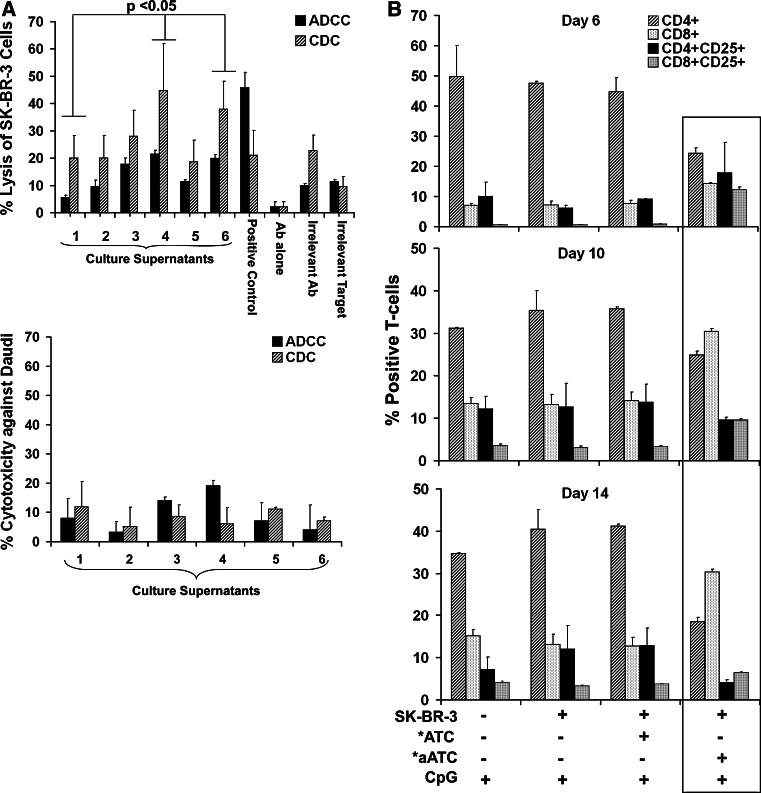Fig. 3.
a Culture supernatants were tested for the ADCC or CDC, anti-Her2/neu antibody (2 μg/well) was used as a positive control, Rituxan® (anti-CD20 antibody, 2 μg/well) as an irrelevant or negative control and Daudi cells + Herceptin® were used as Her2/neu lacking targets. For ADCC, PBMC were added at 10:1 effector-to-target ratio, SK-BR-3 (upper panel) Daudi (lower panel). For CDC, rabbit complement was added to a final concentration of 10%. The x-axis shows anti-SK-BR-3 antibody-mediated ADCC and CDC in the culture supernatants from the following culture conditions: 1 contains PBMC; 2 contains PBMC, SK-BR-3 cells; 3 and 4 contain PBMC + SK-BR-3 + with *ATC or *aATC, respectively; 5 and 6 contain PBMC + SK-BR-3 with unirradiated ATC or aATC, respectively. b Phenotyping for T-cell subsets at day 6, 10, and 14 of co-cultures showing different proportions of CD4+, CD8+, CD4+/CD25+ and CD8+/CD25+ T-cells. Co-cultures containing PBMC + SK-BR-3 with *aATC showed significantly lower CD4+ T-cells (P < 0.0001) at day 6, significantly higher proportion of CD8+ T-cells (P < 0.02) at day 10 and day 14 (P < 0.0001). CpG was added to all culture conditions

